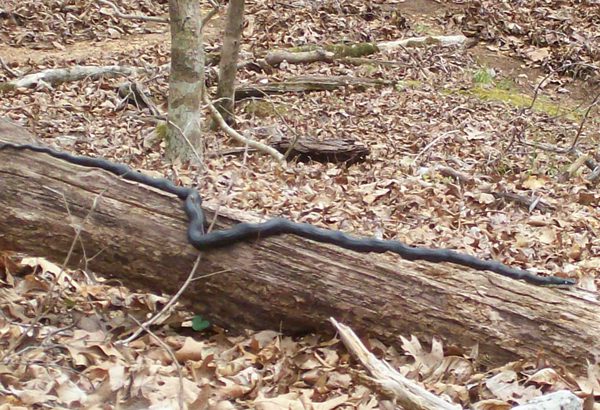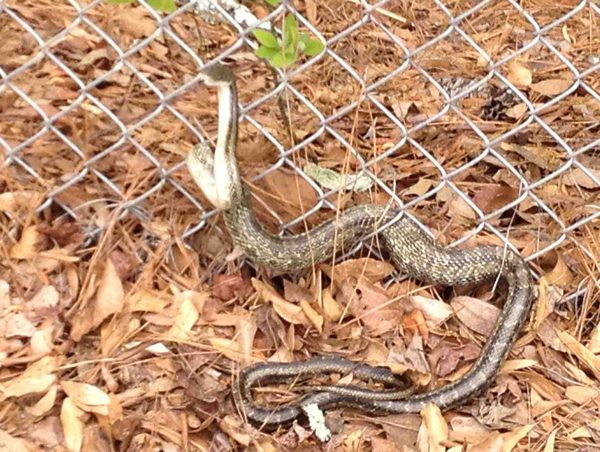A snake that comes in many colors

A friend of mine recently rescued a snake from the parking lot where he works, and released it back into the woods. He sent me a picture asking for help identifying it. The coloration threw me off a bit, so I had to ask an expert.
It was about four feet long with a mix of yellowish brown to black coloring. Although the coloring looked about right for a garter snake, I knew that wasn’t correct because this snake was a bit long, stout and wide to be a garter. The expert I asked helped me identify it as a rat snake. In that area of the state (around Fayetteville) these snakes have a bit different coloration than what I’m used to seeing in this region.
Although most rat snakes fall into the Elaphe genus, there are other genuses that are included in what we call rat snakes. Rat snakes are found both in the New World and the Old World, and are in the Colubrid family of snakes, which are typically considered to be nonvenomous. Some species do have venom – but usually so little as to pose virtually no threat to humans. They are usually 3 to 5 feet in length, but can exceed 10 feet. The species that can be found in North Carolina is Elaphe obsolete.
 As I learned from this identification experience, they are quite variable in color. They are predominantly black in the mountains, yellowish-brown to green (sometimes with stripes) along the coast, and various colors in the area in-between. As a result, they are sometimes divided into black, yellow and gray color variants. Their bellies are white mottled. Juveniles have distinctive black and white checkerboard-like pattern markings, and are sometimes confused with copperheads.
As I learned from this identification experience, they are quite variable in color. They are predominantly black in the mountains, yellowish-brown to green (sometimes with stripes) along the coast, and various colors in the area in-between. As a result, they are sometimes divided into black, yellow and gray color variants. Their bellies are white mottled. Juveniles have distinctive black and white checkerboard-like pattern markings, and are sometimes confused with copperheads.
Rat snakes are sometimes colloquially called black snakes, and are often confused with black racers, which have smooth scales whereas rat snakes have keeled scales (scales with ridges down the center). Rat snakes also can have a wrinkled or kinked appearance.
Of larger snakes found in North Carolina, they are the species most commonly encountered by humans. They feed on rats and birds, so are often found near buildings and sheds in neighborhoods. They are also excellent climbers. Rat snakes are usually docile and secretive, but they will bite and excrete a smelly musk if provoked. If you encounter one in your garden or yard, usually leaving it alone is the best advice. They do provide excellent rodent control, so they are good to have around gardens and barns. Rat snakes are another species you may encounter that pose little threat, has an important place in the ecosystem, and provide a service that benefits humans.